2019 HONDA CRF250: THE REAL TEST
Q: FIRST AND FOREMOST, IS THE 2019 HONDA CRF250 BETTER THAN THE 2018 CRF250?
A: One year ago Honda reinvented the CRF250. It was in desperate need of a change. The low-to-mid engine from 2010 to 2017 was inferior to what the competition was offering. It was easy to ride, but to make it an effective race bike required that buckets of money be dumped into the engine to bring it up to contemporary standards. The 2010 Honda wore out its welcome. It went from being MXA’s 2009 shootout winner to being fourth in 2010—only beating out the less-than-stellar, redhead, Italian-built Husky TC250. Honda’s plummet through the ranks of 250 four-strokes wasn’t the only strange thing. Even weirder, Honda kept the CRF250 on the same slow path for eight long years. In the process, Honda lost its mojo with Honda loyalists. CRF250 sales shrank as Yamaha and KTM took advantage of Honda’s benign neglect.
Finally, in 2018, Honda’s R&D department got the budget to build an all-new CRF250. On paper, it looked like a world-beater. Sadly, something got lost in translation. The 2018 engine, instead of being a KTM fighter, was worse than ever, but in a totally different way. Honda’s top-end only strategy for the 2018 CRF250 resonated with 250 four-stroke buyers. Why did it fail? On the plus side of the equation, the 2018’s top-end power was close to what was being offered by KTM and Husqvarna. But, the 2018 CRF250 lacked any low-to-mid power (it actually produced 3 horsepower less down low than the engine it replaced). Strangely, although designed to rev to 14,000 rpm, Honda put a soft rev limiter in at 12,000 rpm. That killed off the final 2000 rpm of top-end power that was needed to make the high-rpm gamble work. Honda gambled on a high-rpm engine and then folded its cards when the chips were on the table. 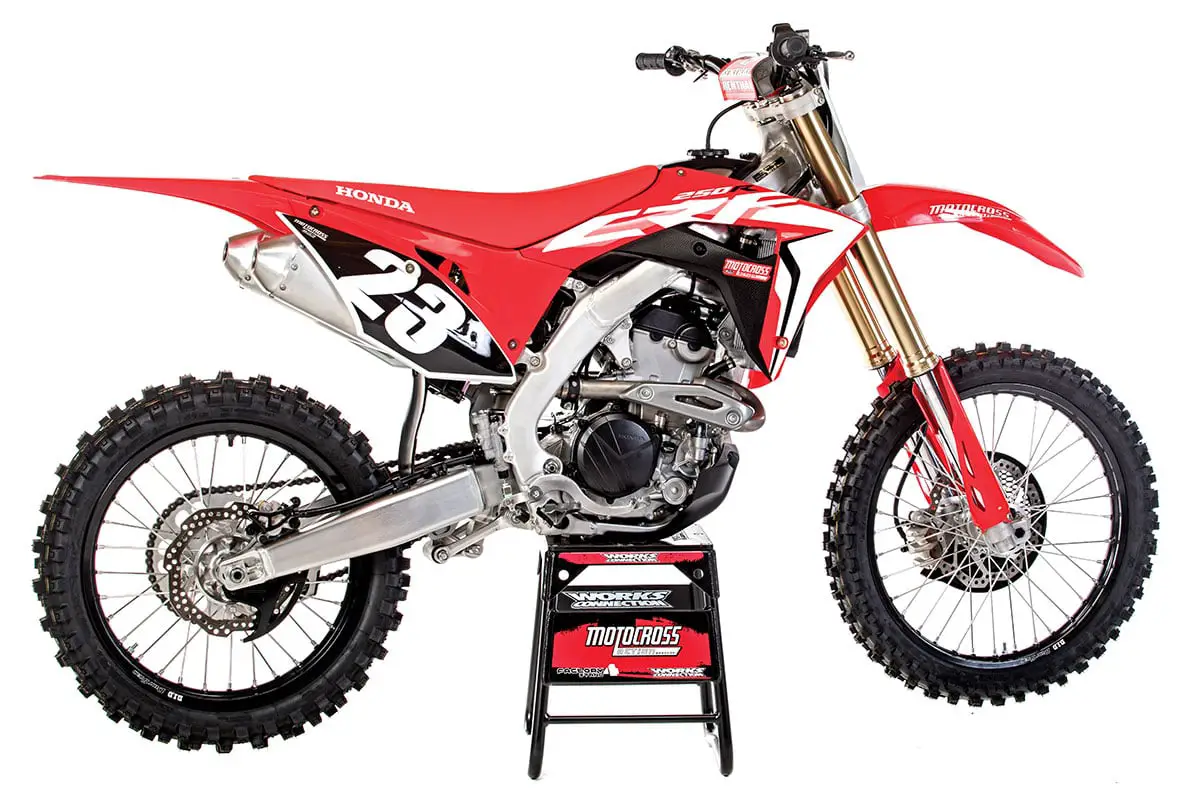 Q: WAS THE 2019 HONDA CRF250 ENGINE HAMPERED BY THE FLAWS OF THE 2018 CRF250?
Q: WAS THE 2019 HONDA CRF250 ENGINE HAMPERED BY THE FLAWS OF THE 2018 CRF250?
A: Honda knew it was in trouble before the 2018 CRF250 even hit the showrooms. Its own race team and R&D test riders told the engineers that the bike ran like it had the rear brake on. The engine was muted. It felt like an old CR125 two-stroke instead of a broad, powerful, high-rpm four-stroke. Anxious Honda dealers hoping to have a 2018 CRF250 that would fly off the showroom floors were soon to be disappointed. The 2018 CRF250s started grenading not too long after they left the showroom floor. The clutch baskets were exploding, which forced a recall of every CRF250 made. It was a tough year for the CRF250.
Honda needed a new 250 four-stroke engine for 2019, one with more low, a broader mid and a top that could be used to the max. But, because of the Japanese manufacturer’s monotonous four-year production cycles, a new engine wasn’t on the horizon. After all, the 2018 CRF250 engine was all new 12 months earlier. That didn’t mean small changes couldn’t make big improvements. Honda’s engineers had no choice but to go to work.
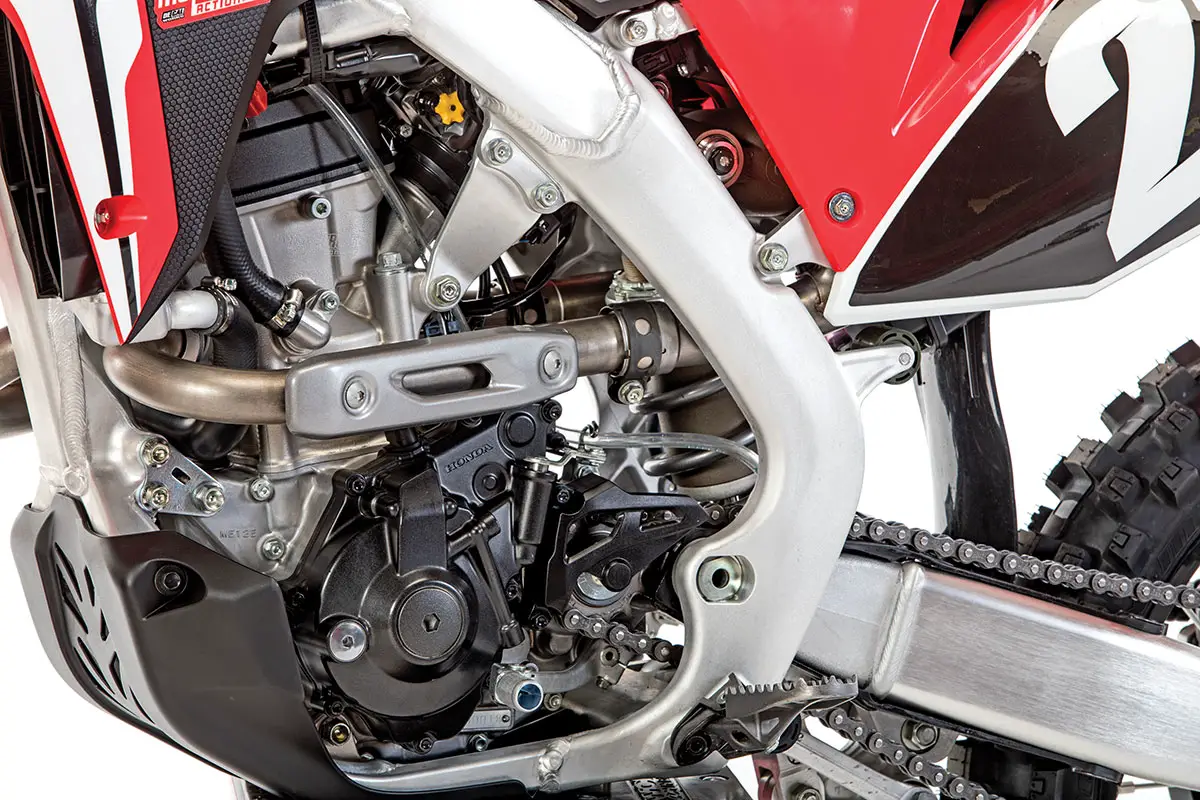
Q: WHAT DID HONDA CHANGE ON THE 2019 ENGINE?
A: Since Honda’s R&D department spent the big budget building a lemon in 2018, they had to find a way to fix the 2019 CRF250 powerband with Band-Aids, splints and hacks. Here is what they changed.
(1) Cam profile. Honda implemented a new cam profile. It was developed by the HRC 250 Grand Prix race team over in Europe. In addition, the valve-close timing was reduced by 2 degrees.
(2) Exhaust ports. The geometry of both the intake and exhaust ports was changed to move the power around.
(3) Exhaust. The right-side exhaust pipe was shortened 50mm.
(4) Oil jet. The piston oil jet got five nozzle holes instead of four. The extra mist was designed to keep the piston cooler to reduce engine knock.
(5) AC generator. The AC generator was redesigned to reduce weight and friction loss.
(6) Clutch. The clutch got the updated basket and judder spring that were used in the 2018 recall.
(7) Throttle body. A smaller 44mm Keihin throttle body replaced the 46mm throttle body.
Q: WHAT ABOUT THE REST OF THE 2019 HONDA CRF250?
A: Obviously Honda’s main focus was on fixing the weak-sister powerband of the 2018 CRF250 for 2019—and doing it while staying within its meager R&D budget. Luckily, Honda only had to make small changes to the suspension and chassis. Here is what Honda updated for 2019 on the rest of the CRF250 package.
(1) Launch control. Like the 2019 CRF450, the CRF250 also gets the three-mode launch control.
(2) Fork guards. The new wraparound fork guards improved tube coverage.
(3) Bars. Honda went from 7/8th Renthal bars to oversized 1-1/8th Renthal Fatbars.
(4) Brake caliper. The front brake caliper was redesigned with a larger 30mm piston to work in unison with the previous 27mm piston. This mod improved brake modulation on the 270mm front rotor.
(5) Triple clamp. The top triple clamp now features two handlebar locations that result in four total riding positions. The two added positions enable the rider to move the bars across a 26mm range, including 10mm more rearward movement from the stock position.
(6) Engine guard. The engine guard was redesigned to increase airflow for improved engine cooling.
(7) Rims. The D.I.D. Dirt Star rims were changed from silver to black.
(8) Footpegs. The footpegs are 20 percent lighter and have a new shape to shed mud more easily.
Q: HOW DOES THE 2019 CRF250 ENGINE COMPARE TO THE 2018 ENGINE ON THE DYNO?
A: The 2019 Honda CRF250 produces 2 more horsepower from 8000 to 10,000 rpm and 1 to 2 more ponies from 10,000 to 11,200 rpm. Those gains pumped up peak horsepower to 42.40, compared to last year’s 40.68. On the dyno, the 2019 CRF250 produces more power on every part of the rpm curve than its 2018 predecessor.
Q: HOW DOES THE 2019 HONDA CRF250 ENGINE COMPARE TO THE COMPETITION ON THE DYNO?
A: Do you want the good news or the bad news? The CRF250 is right there with the Austrian duo in the peak-horsepower department. Only 3/10ths of a horsepower separate the Honda, KTM and Husqvarna at peak. The YZ250F is fourth in peak power, while the KX250 and RM-Z250 are both down in the 39 horsepower range. The good news is that the 2019 Honda CRF250 reigns as the horsepower king from 10,000 rpm all the way to 12,200 rpm by as much as a horse and a half.
The bad news is that even after gaining 2 more ponies off the bottom, it is still 4 horsepower off the KX250 at 7000 rpm, more than 2 horsepower off the YZ250F at 8000 rpm, and a horse and a half off the KTM 250SXF at 9000 rpm. On the dyno, the Honda CRF250 doesn’t start stretching its legs until late in the game at 10,000 rpm.
Q: HOW DOES THE ENGINE RUN ON THE DIRT DYNO?
A: Right up front, we want every loyal Honda CRF250 owner to know that the 2019 CRF250 has a much better powerplant than the 2018 model. There is improved throttle response that gets to the meat of the powerband quicker and pulls harder on top. The power curve tracks the exact same linear curve as last year’s CRF250 but with more power across the board. Given those statements, you would be hard-pressed to understand what the MXA test riders could possibly complain about. But complain they did.
In motion, the 2019 Honda CRF250 lacked any snap down low. The CRF250 was hard to keep on the pipe coming out of corners. It was sluggish from low to mid. It didn’t jump out of a corner like a YZ250F, KX250, 250SXF or FC250. In fact, even the much-maligned Suzuki RM-Z250 would kill it when the speed and rpm dropped below quasar. The Honda’s linear powerband isn’t what a 250 four-stroke needs, wants or can use. The bulk of 250 four-stroke riders need immediate power and torque on tap to get the bike moving towards the upper rpm range. The lack of low-end power affects top-end, because a weak low-to-mid transition is like a weak base on a pyramid—there is no foundation of power to build on. All it has is the top of the pyramid with nothing below it. Every MXA test rider whined about the low-to-mid transition, just as they did with the 2018 engine.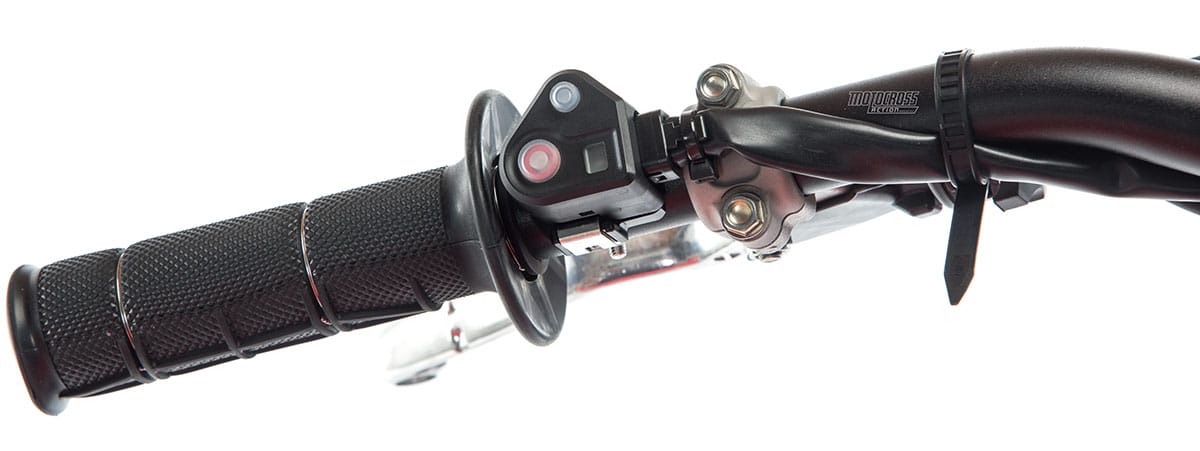 The CRF250 comes with three maps and launch control.
The CRF250 comes with three maps and launch control.
Q: IS THERE A QUICK FIX TO GET MORE BOTTOM AND MID OUT OF THE ENGINE?
A: No. If there were, then Honda’s R&D department would have done it. There are small things that you can do to get the stock engine up and running—like swapping out the tall 13/48 gearing combo for a lower 13/49 setup. This allowed the test riders to abuse the clutch less out of corners and get to the sweet spot of the powerband quicker. Consumers will have to rely on the hop-up shops to give them more power—but “give” isn’t the operative word. Power costs money.
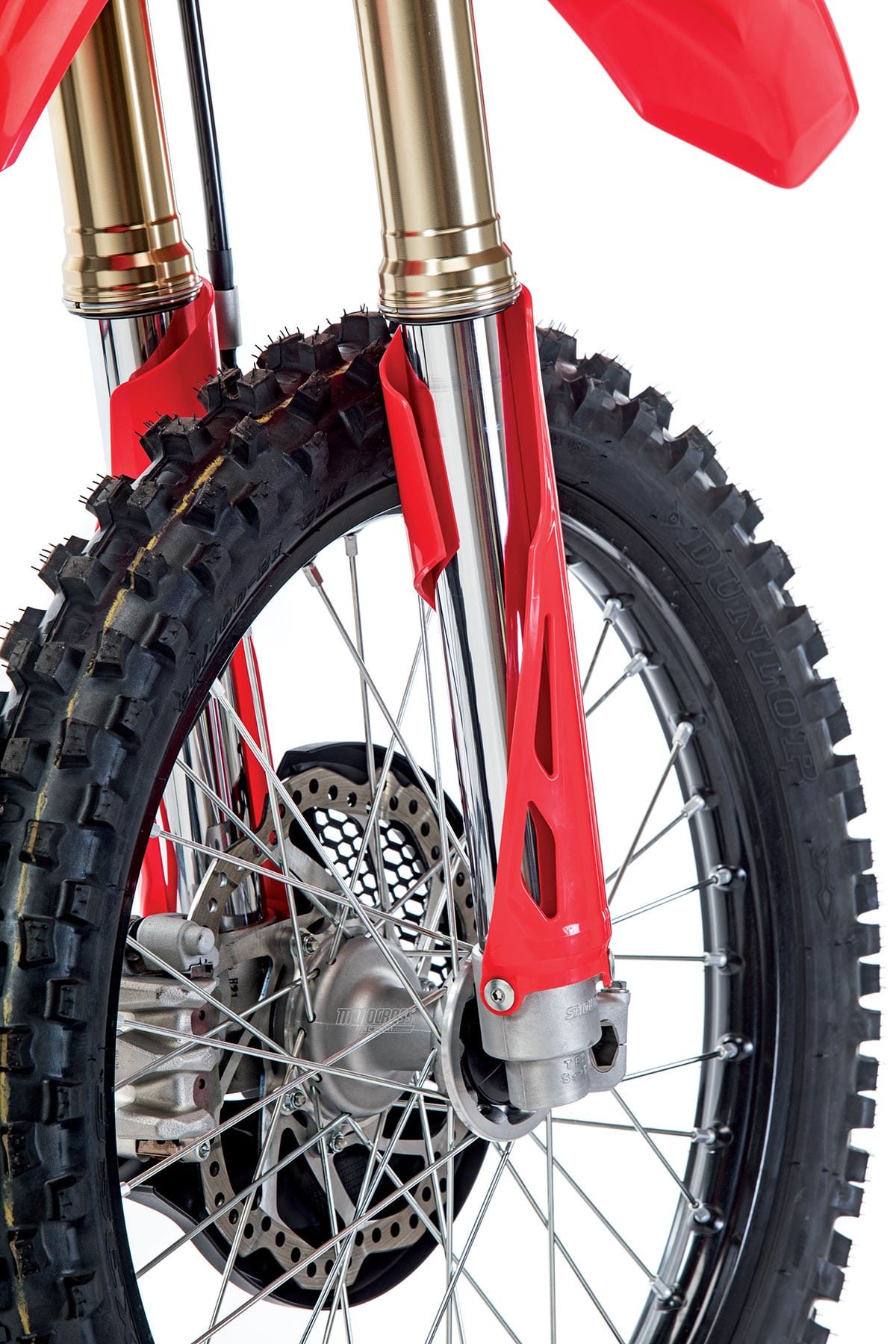
Q: WHAT DO WE THINK OF THE HONDA CRF250 CHASSIS?
A: We think that the 2019 Honda CRF250 has a great chassis—and we thought the same thing about the 2018 CRF250. It offers great ergonomics that make the rider feel right at home. We like that Honda added the multiple bar clamp positions, because the CRF250 has a small cockpit in comparison to some of its competition. For taller riders, the ability to move the bars forward over an inch will expand the rider’s triangle.
Our only handling complaint was that the CRF250 oversteered at turn-in when running the recommended 105mm of sag. Dropping the sag to 107mm or more gave the test rider increased consistency coming into and getting out of corners. Some test riders also dropped the forks into the clamps to lift the front of the chassis and put more weight on the rear. The CRF250 tracked better with more sag and was definitely more stable at speed.
In the air, the CRF250 feels much lighter than it really is. Racers who move around a lot in the air felt that the 2019 CRF250 was the lightest bike in the class. Not true. Not even close. On the scales, the 2019 Honda CRF250 weighs 228 pounds. It is 10 pounds heavier than the 2019 KTM 250SXF and 5 pounds heavier than a 2019 KTM 450SXF.
Q: HOW ARE THE SHOWA COIL-SPRING FORKS?
A: After struggling with Honda’s forks for the last couple of years, the return of coil-spring forks is a welcome relief. These are good forks. Lighter test riders felt they were a bit stiff, but they are easy to set up for most riders. They have a supple feel at the top of the stroke and gradually ramp up in firmness without any harsh spots.
Q: WHAT DID WE HATE?
A: The hate list:
(1) Engine. For 2019 Honda made big strides in horsepower production. Now Honda needs to work a little harder on getting the power to where it will do the most good. The CRF250 needs more low-to-mid power to dance with the competition.
(2) Weight. If feels light when it is in the air, but so does a 155,500-pound Boeing 737—all that changes once the ground is involved in the equation.
(3) Engine covers. The paint on the ignition and clutch covers was scratched on the first ride. Honda should switch to brushed aluminum so the covers will look better longer.
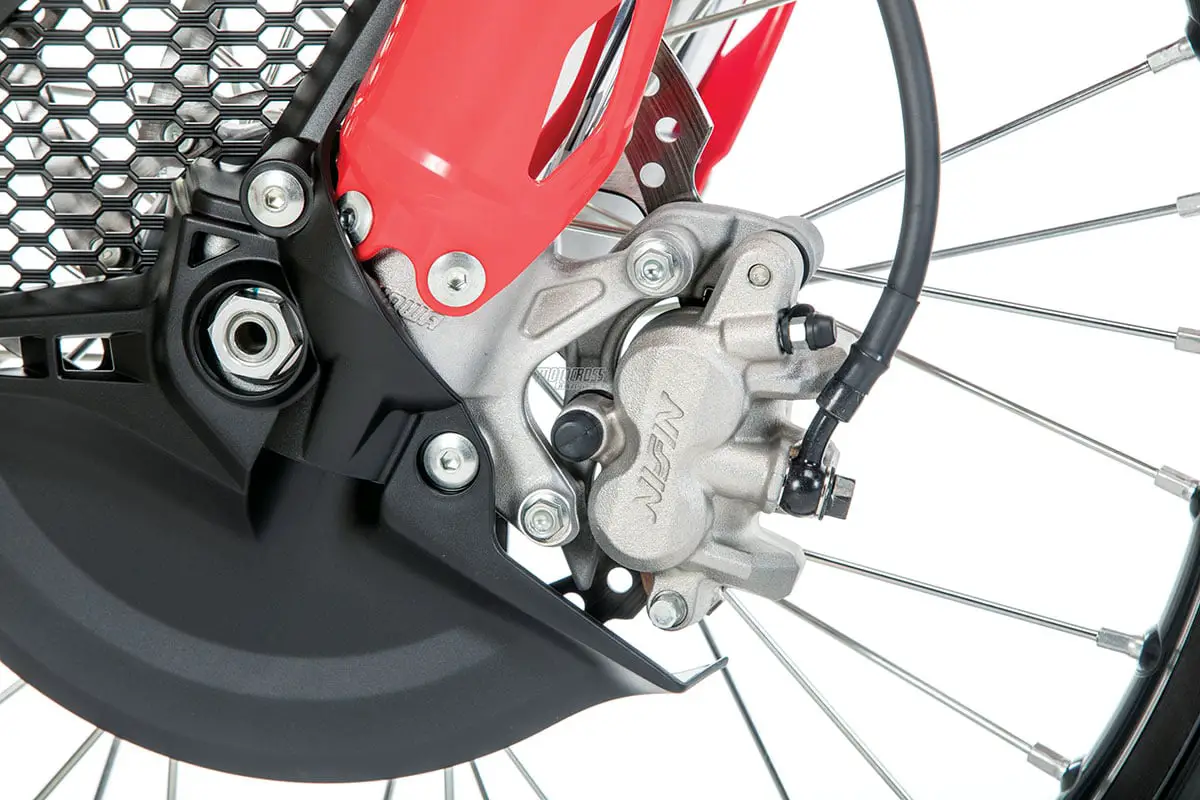
Q: WHAT DID WE LIKE?
A: The like list:
(1) Handling. This is an easy bike to get comfortable on.
(2) Forks. The Showa coil spring forks work great for a wide range of riders.
(3) Tires. We love the Dunlop MX3S front and rear tires that come standard.
(4) Maps. We like having three different options to choose from.
(5) Clutch. It offers a decent clutch package and has an easy pull at the lever.
(6) Front brake. The bigger piston in the caliper improved stopping power.

If the 2019 YZ250F engine was stuffed into the CRF chassis this would be the best bike in the 250 four-stroke class.
Q: WHAT DO WE REALLY THINK?
A: We acknowledge Honda for spending R&D money on the botched 2018 CRF250 powerplant. The money, albeit a pittance, was well-spent on the 2019 engine. It is better in every way; however, every MXA test rider still complained about the lack of bottom end. It is an engine package that is too one-dimensional for its own good. The engine is the Hitchcockian MacGuffin in the 2019 Honda CRF250 plot line. The outcome of the story depends on Honda finding a better powerband, not necessarily more power. As for the rest of the CRF250, MXA test riders had nothing but good things to says about the CRF250’s suspension and chassis. The bike is capable of being a complete package—once Honda figures out the engine.
MXA’S 2019 HONDA CRF250 SETUP SPECS
This is how we set up our 2019 Honda CRF250 for racing. We offer it as a guide to help you find your own sweet spot.
SHOWA COIL SPRING FORKS
Honda hit the nail on the head with the valving and spring rates on the Showa A-kit spring forks. Initial settings were close to spot-on. With stock settings, the forks rode down in the stroke. We added a few clicks of compression to allow them to ride higher. Some of the riders also dropped the forks 2mm in the clamps to lessen chassis oversteer. If you are experiencing oversteer, drop the sag a couple millimeters before lowering the forks. For hard-core racing, these are MXA’s recommended 2019 CRF250 fork settings (stock settings are in parentheses):
Spring rate: 4.6 N/m
Compression: 7 clicks out (9 clicks out)
Rebound: 13 clicks out (14 clicks out)
Fork-leg height: 3mm (5mm)
Notes: The forks worked well for 140- to 200-pound riders. Ride with these forks before you send them to your suspension guru. You might just be surprised how well they work for your weight and skill level.
SHOWA SHOCK SETTINGS
We dropped the race sag to 107mm to lower the overall bike height and stiffened up the low-speed compression to make it ride higher in its stroke. For hard-core racing, these are MXA’s recommended 2019 CRF250 shock settings (stock settings are in parentheses):
Spring rate: 52 N/m
Race sag: 107mm (105mm)
Hi-compression: 3-1/4 turns out (3-1/2 turns out)
Lo-compression: 9 clicks out (11 clicks out)
Rebound: 7 clicks out (8 clicks out)
Notes: The shock is consistent. It doesn’t do anything out of the ordinary. Lighter riders under 140 pounds will want to stick with the stock setting.


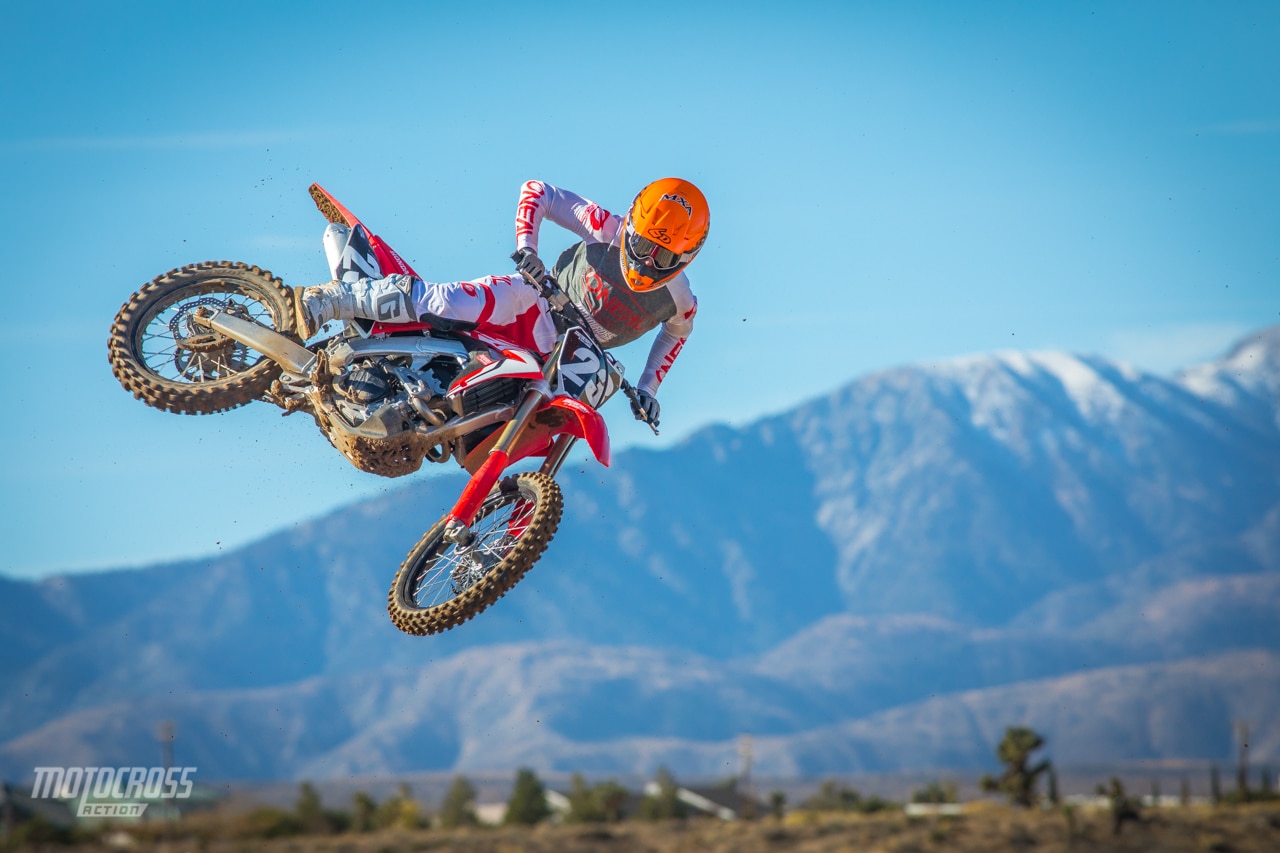
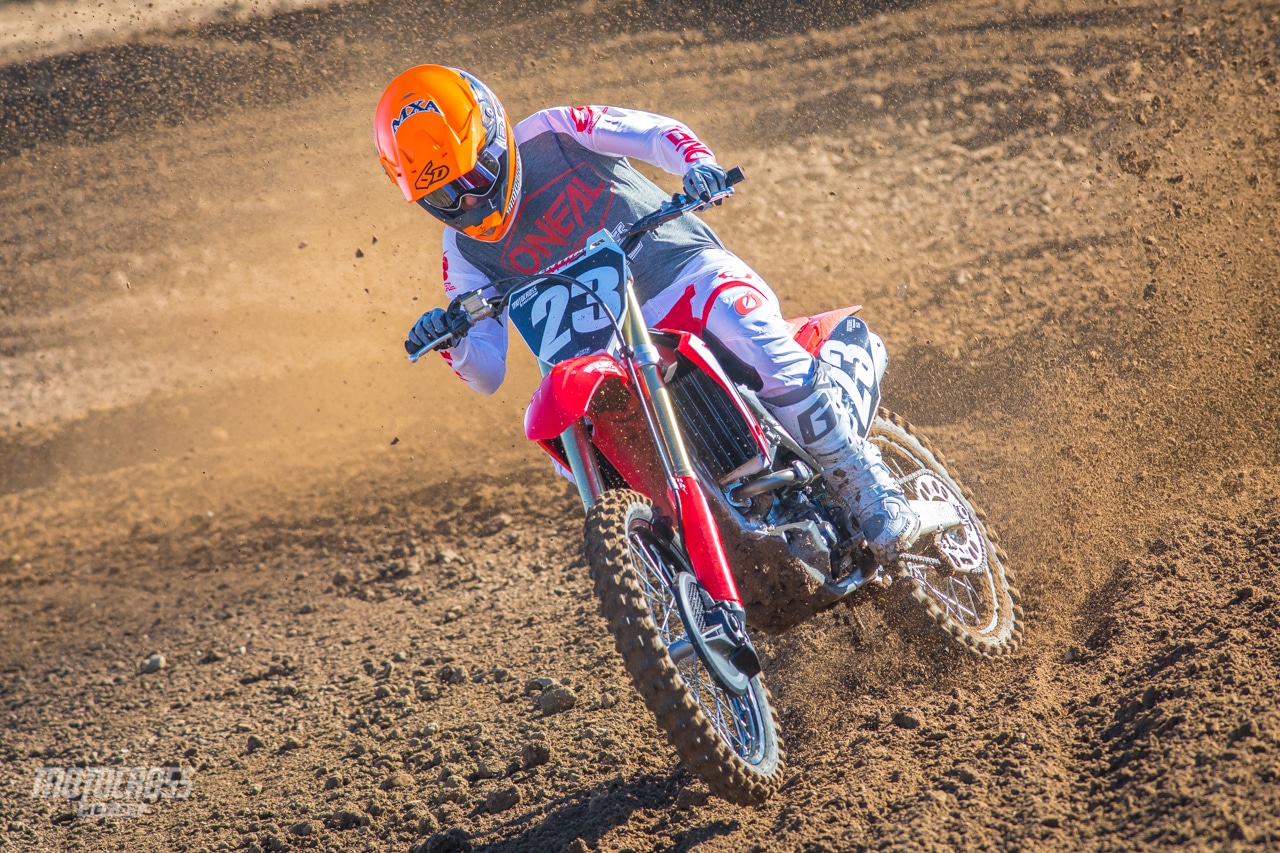
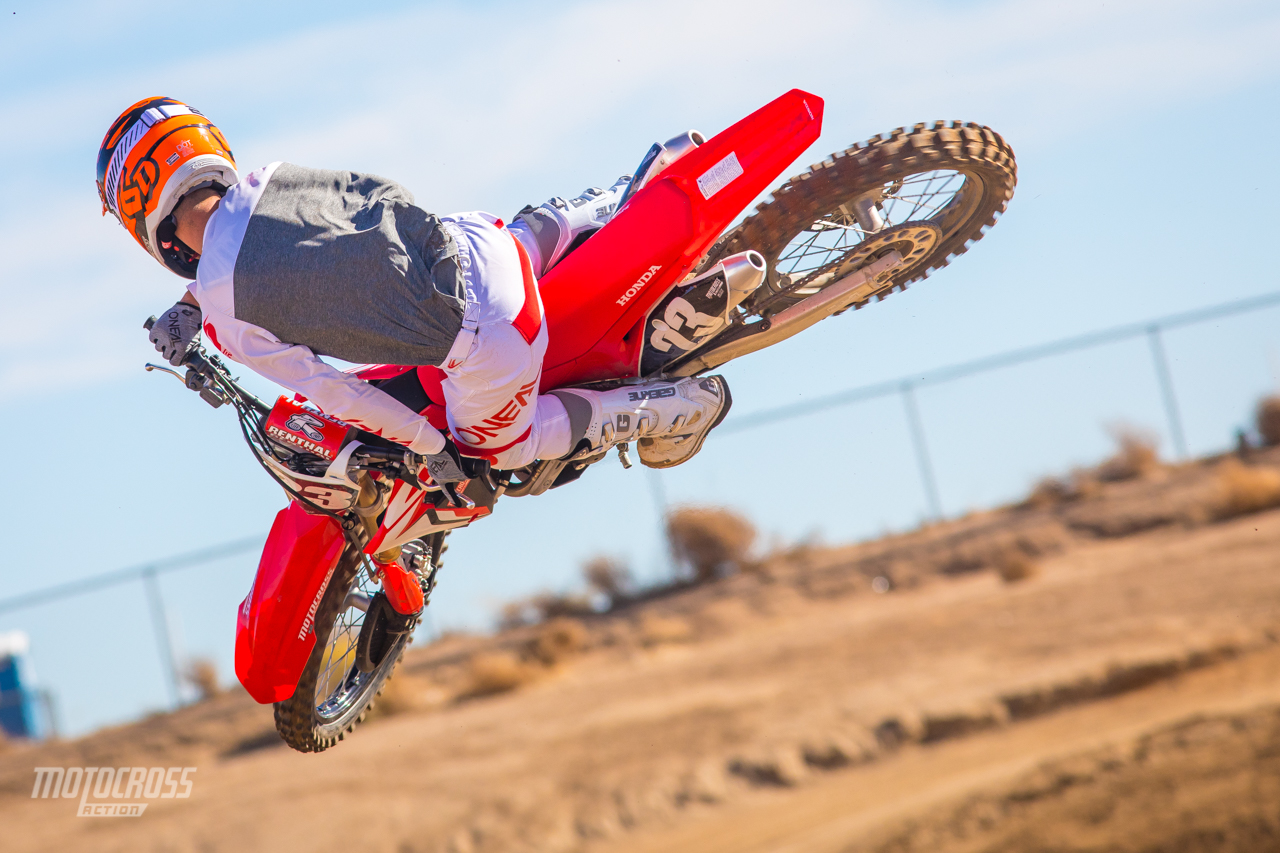
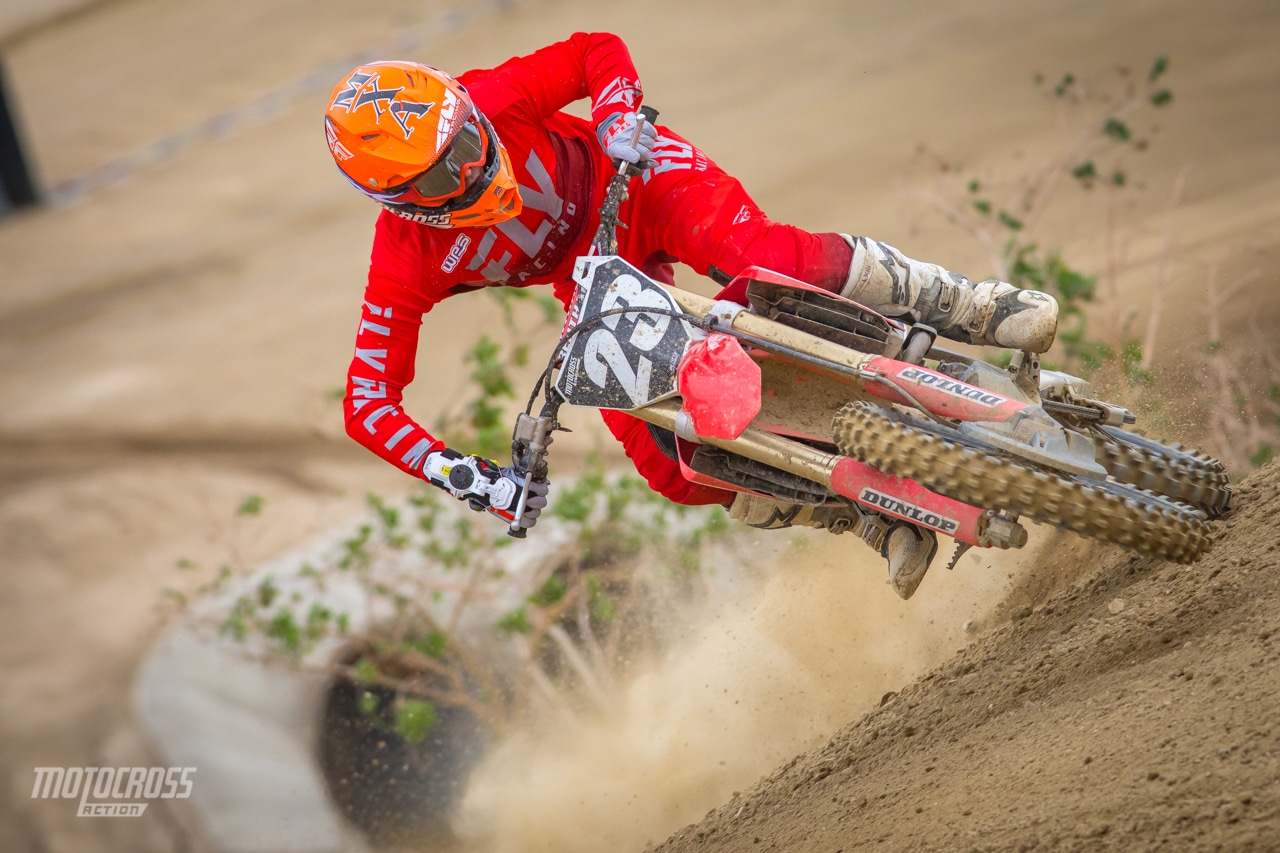

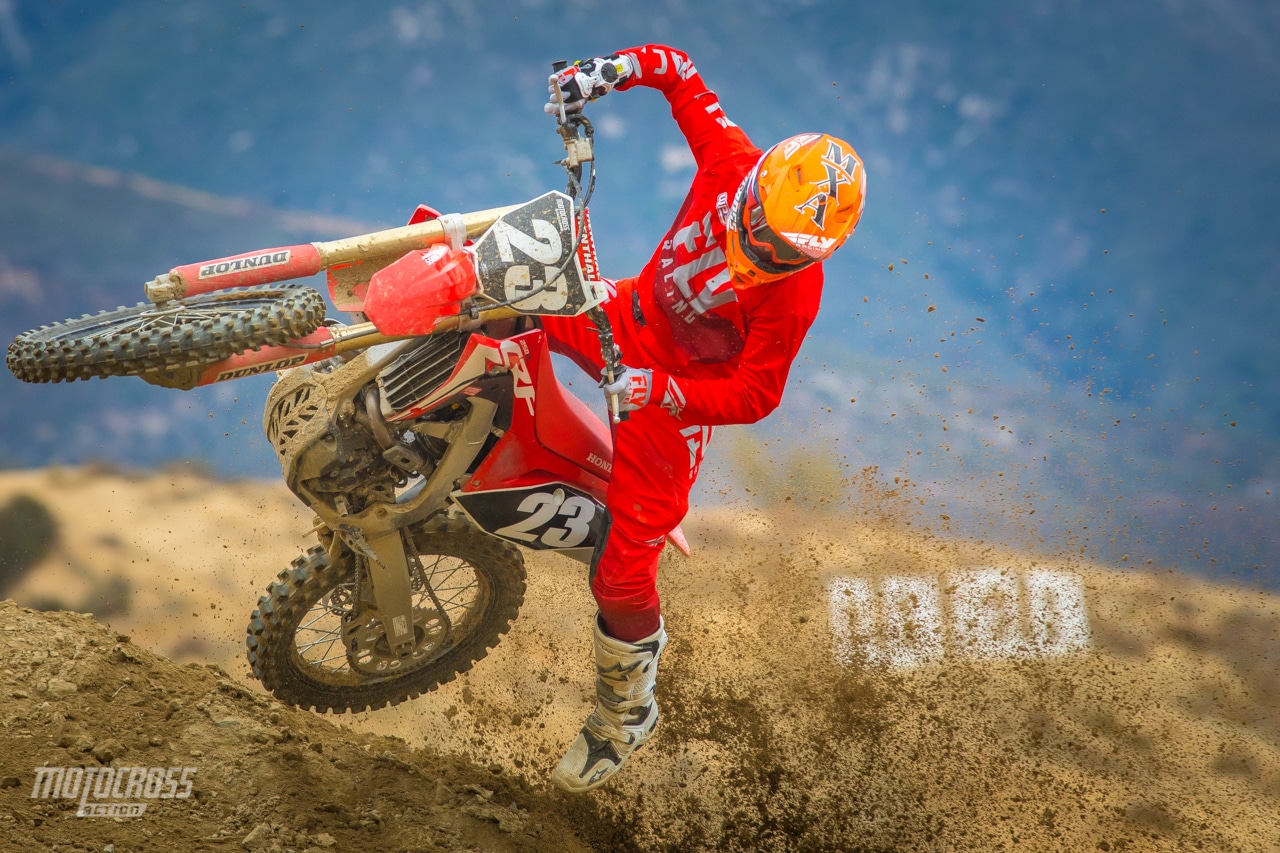
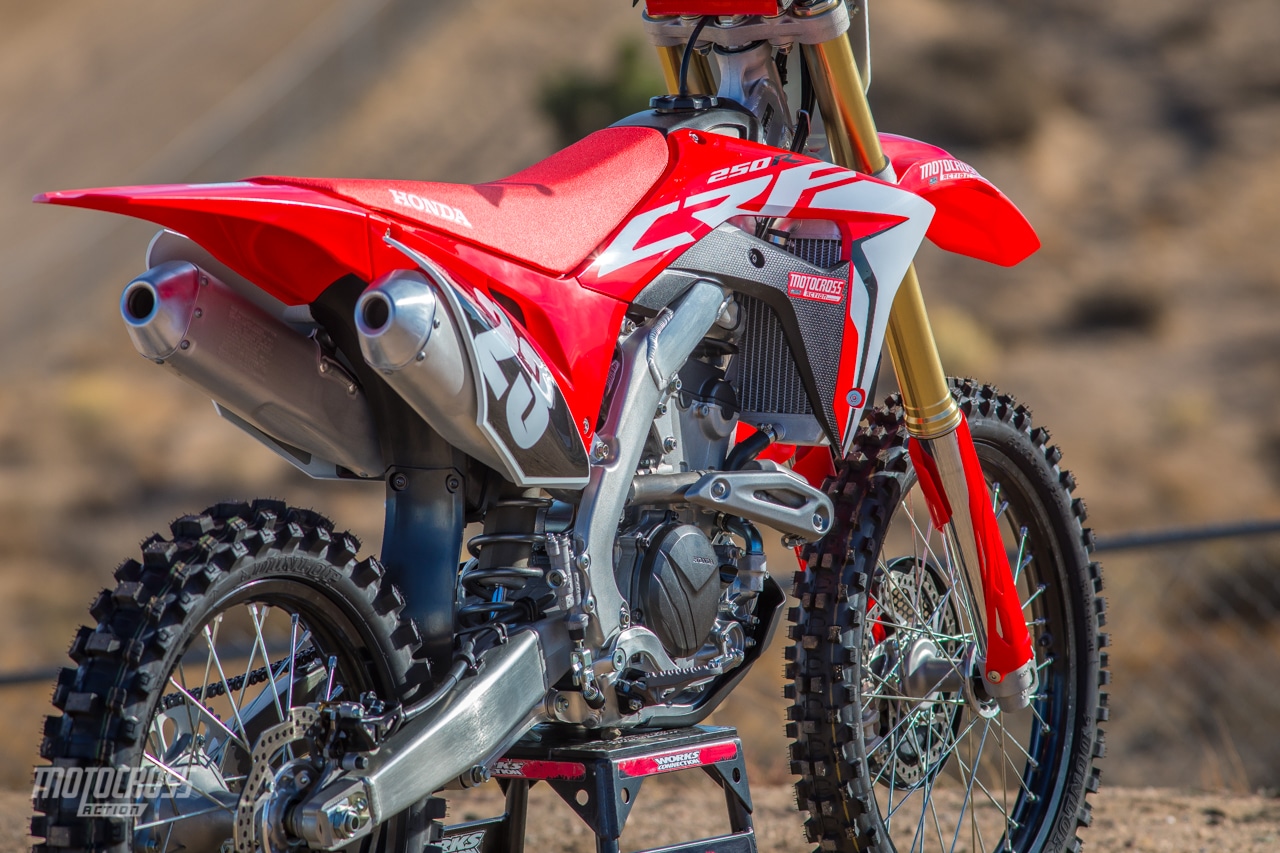
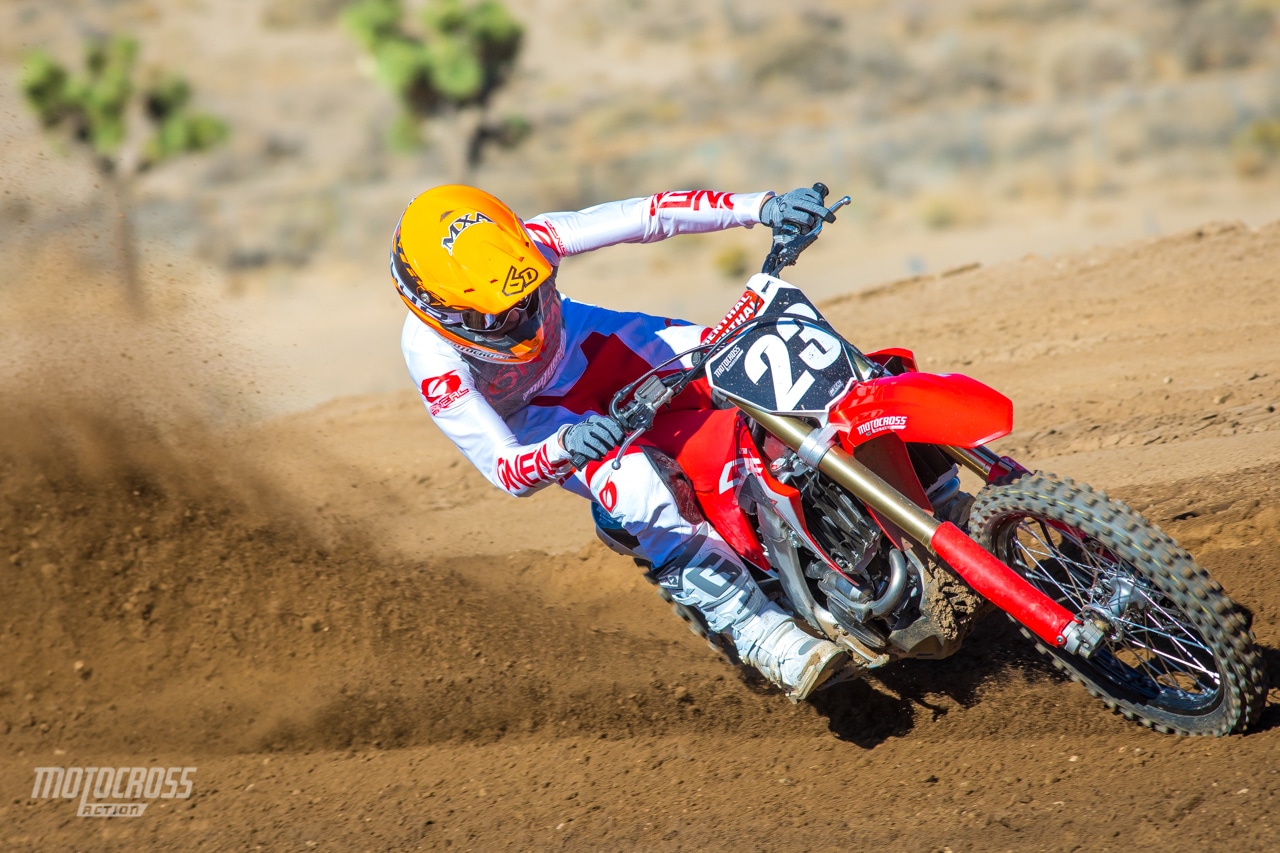



Comments are closed.